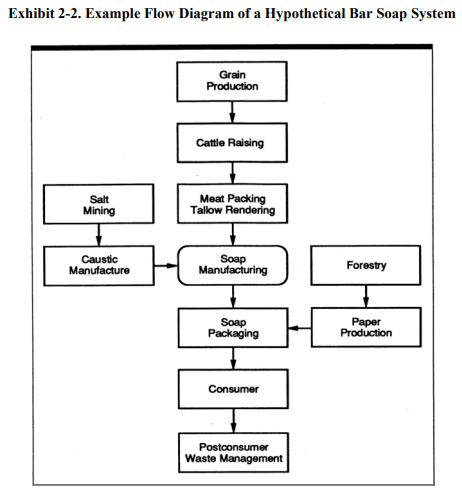LIFE CYCLE ASSESSMENT
Life Cycle Assessment (LCA) is a tool used in assessing the environmental impacts of a new product by considering these impacts through all stages of its life. It is crucial to perform a comprehensive LCA before introducing a new product if the product is being claimed to be more sustainable and hence more beneficial to the environment than the incumbent products. While the results of the LCA often validate such claims, in some instances LCA shows that a product that appeared superficially and/or intuitively to be more sustainable is actually less sustainable or at best comparable to the incumbent products.
LCA takes into account impacts due to the raw materials being used in manufacturing a product, impacts due to the manufacturing process, impacts during use, impacts of maintenance processes, and impacts of final disposal of the product. In many instances, when there are different viable options for aspects of the product life cycle such as which materials and fabrication processes to use in manufacturing the product and how to dispose of it after it ceases being useful, LCA is used to select the best options.
A report titled Life Cycle Assessment: Principles and Practice, published in May 2006 by the U.S. Environmental Protection Agency (EPA), provides an introductory overview of LCA and describes its general uses and major components. This report is designed to be an educational tool for those who want to learn the basics of LCA, how to conduct an LCA, or how to manage others conducting an LCA. It presents the four basic stages of conducting an LCA; namely, goal and scope definition, inventory analysis, impact assessment, and improvement analysis. The major stages in an LCA study are raw material acquisition, materials manufacture, production, use/reuse/maintenance, and waste management. The system boundaries, assumptions, and conventions addressed in each stage are presented.
Five of the exhibits from this EPA report are pasted below since they are especially helpful in providing an overview of the most essential aspects of LCA. It is important to be thorough and to use good judgment in performing an LCA since the conclusions reached through an LCA that leaves out relevant factors and/or makes mistaken assumptions about the environmental impacts can be completely wrong and hence misleading.
- Exhibit 1-1 illustrates the possible life cycle stages that can be considered in an LCA and the typical inputs/outputs measured.
- The LCA process is a systematic and phased approach. It consists of four components; namely, goal definition and scoping, inventory analysis, impact assessment, and interpretation, as illustrated in Exhibit 1-2.
- Exhibit 2-1 provides an example of life cycle stages that could be included in a project related to treatment technologies.
- Exhibit 2-2 shows an example of setting system boundaries for a product baseline analysis for a hypothetical bar soap system.
- The Life Cycle Impact Assessment (LCIA) phase of an LCA is the evaluation of potential human health and environmental impacts of the environmental resources and releases identified during the Life Cycle Inventory (LCI) preparation phase of the LCA. For an LCIA, impacts are defined as the consequences that could be caused by the input and output streams of a system on human health, plants, and animals; and/or how the system may affect the future availability of natural resources. Typically, LCIAs focus on the potential impacts to three main categories; namely, human health, ecological health, and resource depletion. Exhibit 4-1 shows some of the more commonly used impact categories.
ISO 14040:2006 (Environmental management -- Life cycle assessment -- Principles and framework), which was most recently reviewed in 2016 and hence is still current, is a useful standard for LCA.





